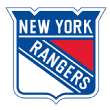Could this trade mark a significant turning point for both teams? That question hangs over the Anaheim Ducks and the New York Rangers following the first major roster move of the offseason.
On Thursday, the Rangers finalized a deal sending forward Chris Kreider and their own 2025 fourth-round draft pick (previously acquired from Anaheim) to the Ducks. In return, New York received promising center prospect Carey Terrance and a 2025 third-round pick that originally belonged to Toronto.
Here`s a look at the implications of this transaction for both organizations and how they fared in the deal.
Grade: B+
Multiple factors contributed to the Rangers` decision to move on from Chris Kreider. A primary driver was the need to create salary cap flexibility. Questions about his recent production relative to his contract also played a role, alongside the possibility of finding replacement scoring elsewhere.
Kreider has been a remarkably consistent scorer, reaching the 20-goal mark in seven consecutive seasons and ten times throughout his career. However, his production saw a dip this past season.
After turning 34 in April, he finished the season with 22 goals, a decline from his output over the previous three years where he averaged over 36 goals and 69 points per season. This season, his point-per-game rate dropped to 0.44 (30 points in 68 games).
With two years remaining on his contract carrying a $6.5 million annual cap hit, the financial aspect became a key consideration for the Rangers.
Upcoming salary obligations, particularly goaltender Igor Shesterkin`s new contract starting in 2025-26 that increases his annual cap hit significantly, pressured the cap situation. Additionally, in-season trades for Will Borgen and J.T. Miller added substantial salary commitments. Borgen signed a five-year extension, and Miller is in the second year of a seven-year deal.
This financial squeeze necessitated finding solutions for a group of seven restricted free agents, including important young players like K`Andre Miller, Zac Jones, Matthew Robertson, and Will Cuylle.
Naturally, questions arise regarding how the Rangers will replace Kreider`s goal-scoring production.
The recent signing of Boston College star winger Gabe Perreault is timely, providing a potential top-six forward option on a cost-effective entry-level contract. This move helps create needed cap space to address the RFA class and pursue other potential offseason goals.
Following the trade, the Rangers now have approximately $14.9 million in cap space, according to PuckPedia, significantly increasing their financial maneuverability. It`s possible they aren`t finished making moves.
Acquiring Carey Terrance, a center prospect who signed with the Ducks in April, addresses a perceived need in the Rangers` system. While Noah Laba and Dylan Roobroeck are other notable center prospects, Terrance adds further depth.
Terrance, a second-round pick in 2023, recorded his third straight 20-goal season in the OHL with the Erie Otters, finishing with 39 points in 45 games. He also represented Team USA at the World Junior Championships, scoring twice in seven games before sustaining an injury.

Anaheim Ducks
Grade: B+
Rebuilding teams aim to reach a better competitive state, understanding that the path varies. The acquisition of Kreider signals the Ducks are maintaining their strategic approach: supplementing a promising young core with respected veteran players. This strategy is intended to propel them towards playoff contention or at least the wild-card race in the 2025-26 season.
Beyond their drafting and development success, the Ducks have actively brought in experienced veterans such as Radko Gudas, Alex Killorn, Frank Vatrano, and Kreider`s former teammate, Jacob Trouba.
Adding Kreider enhances the Ducks` forward group, which already includes Sam Colangelo, Cutter Gauthier, Troy Terry, Killorn, and Vatrano. This provides the team with multiple goal-scoring threats capable of finding the net in various ways.
What makes the Ducks particularly intriguing – or perhaps concerning, depending on perspective – is their cap situation. Even after taking on Kreider`s $6.5 million cap hit, General Manager Pat Verbeek projects to have over $32 million in cap space, per PuckPedia.
This significant financial flexibility could make Anaheim a desirable destination for free agents when the market opens on July 1.
However, Verbeek must manage this space prudently. Key young players like Lukas Dostal, Drew Helleson, and Mason McTavish are pending restricted free agents who will require new contracts soon. The following offseason presents an even larger challenge, with Leo Carlsson, Jackson LaCombe, Pavel Mintyukov, Trevor Zegras, Olen Zellweger, and Gauthier all needing new deals concurrently.
Having so much young talent still on entry-level contracts creates this period of financial opportunity. It`s why the Ducks could afford to acquire a player like Kreider for the cost of a draft pick and a prospect like Terrance, who was somewhat redundant given the Ducks` depth at center both in the NHL and within their prospect pipeline (including Lucas Pettersson, their 2024 second-round pick).
Since initiating their rebuild, the Ducks franchise has focused on consistent progress. They have built one of the league`s most promising prospect pools and fostered high expectations for their young players. Simultaneously, they have demonstrated the willingness to make timely veteran acquisitions like the Kreider trade.

So, what comes next?
Finishing with 80 points this past season, their highest total since 2018-19, puts them at a critical juncture. This progress partly explains the decision to replace head coach Greg Cronin after two seasons with Joel Quenneville, signaling the organization`s belief it`s time to push further.
The Western Conference remains highly competitive, a true gauntlet. While established powerhouses like Edmonton, Dallas, Vegas, and Colorado are contenders, other teams have recently shown they can emerge.
The Seattle Kraken made a significant jump in their second season (2022-23). A year later, the Vancouver Canucks did the same under Rick Tocchet (2023-24). This season saw the St. Louis Blues return to the playoffs, while teams like the Calgary Flames and Utah Hockey Club pushed late into the regular season.
Anaheim finished 16 points shy of the final Western Conference wild-card spot. However, their consistent improvement, coupled with making two significant offseason moves (and potentially more to come), suggests they are positioning themselves to contend for a playoff spot in the near future.











